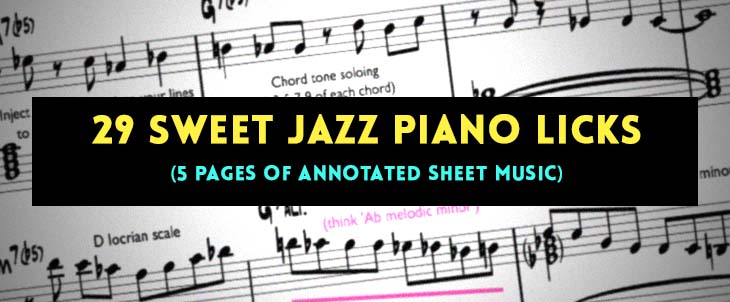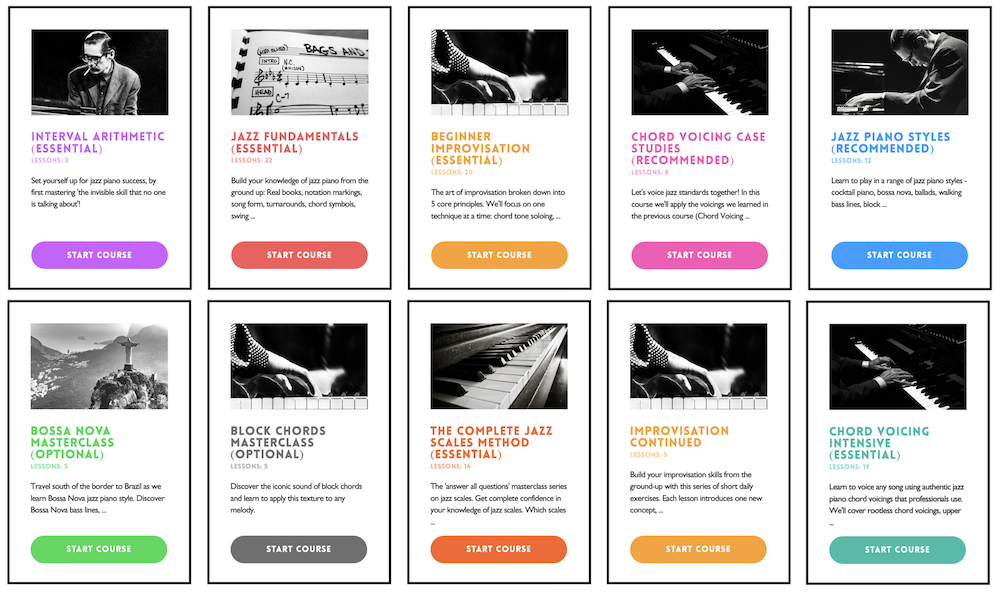Jazz Theory Explained in 20 Minutes
Jazz Theory Explained in 20 Minutes
In today's lesson we'll cover Jazz theory from the ground up.
I've broken down Jazz theory into three sections: chords, chord progressions, and scales.
Let's dive in.
How do Jazz chords work?
Chords in jazz are more complex than in other styles of music.
Most musical styles use three-note chords ("triads") consisting of the root, third, and fifth.
In jazz, chords are built by stacking thirds above the fifth, resulting in seventh chords.
Seventh chords consist of the root, third, fifth, and seventh notes.
Jazz chords can be extended beyond the seventh to include the ninth, eleventh, and thirteenth notes.
Chord extensions are based on the major scale starting from the root of the chord.
The most common jazz seventh chords are major seventh, minor seventh, and dominant seventh chords.
Chord extensions can be added to any type of seventh chord, providing further complexity to the sound.
Altered chord extensions, such as flat nine, sharp nine, sharp eleven, and flat thirteen, can be used to create unique voicings.
What Chord Progressions does Jazz use?
Chord progressions define the characteristic sound of different styles of music.
Jazz is known for its two-five-one chord progression.
The major two-five-one progression is the most common in jazz.
A major two-five-one progression consists of a II chord, a V chord, and a I chord in a major key.
The minor two-five-one progression is also used in jazz, but less frequently.
Understanding and practicing these progressions is essential for mastering jazz improvisation.
What Jazz Scales do I need to know?
Scales play a crucial role in jazz improvisation.
While the major scale is the foundation for chord extensions, other scales and modes can be used over different chords.
Jazz musicians commonly use modes derived from the major scale, such as the Dorian and Mixolydian modes.
Scales provide different colors and moods when improvising over specific chords.
Conclusion:
Jazz theory can be intimidating, but breaking it down into smaller sections simplifies the learning process.
By understanding and practicing chords, progressions, and scales, viewers will develop a deeper confidence in their understanding of jazz theory.
Free Sheet Music
Want to noticeably transform your Jazz piano playing in the next 15 minutes?
Print one of my free Jazz piano resources (below) and take it to the piano...
'29 Jazz Piano Licks' (sheet music)
5 solid pages of my best Jazz Piano Licks - fully notated (plus left-hand chord voicings). Includes major 2-5-1 licks, minor 2-5-1 licks, minor 7 licks, and altered scale licks:

'The Chord Voicing Guide' (e-book)
Discover 5 types of Jazz piano chord voicing - includes rootless voicings, 4th voicings, shells, open voicings, the Kenny Barron voicing, plus modifications:
'23 Sweet Chord Progressions' (sheet music)
6 pages of my best Jazz piano chord progressions, fully notated and annotated. Packed full of chord voicings and left-hand bass lines too:
'The Chord Symbol Reference Guide' (free)
Get clarity on Jazz chords: This one-page document shows you almost every type of Jazz chord you're likely to encounter. Includes 7th chords, 6th chords, 9th chords, 11th chords, 13th chords, and slash chords.
Learn Faster with my Jazz Piano Courses
Now you can race through YEARS of Jazz piano lessons in the next few days.
I've filmed all the lessons I would normally teach over a 5-year period, and organized them into concise courses.

Courses include: 'Improvisation Step-by-Step', 'Chord Voicing Intensive', 'Arranging Jazz Standards' and more.
